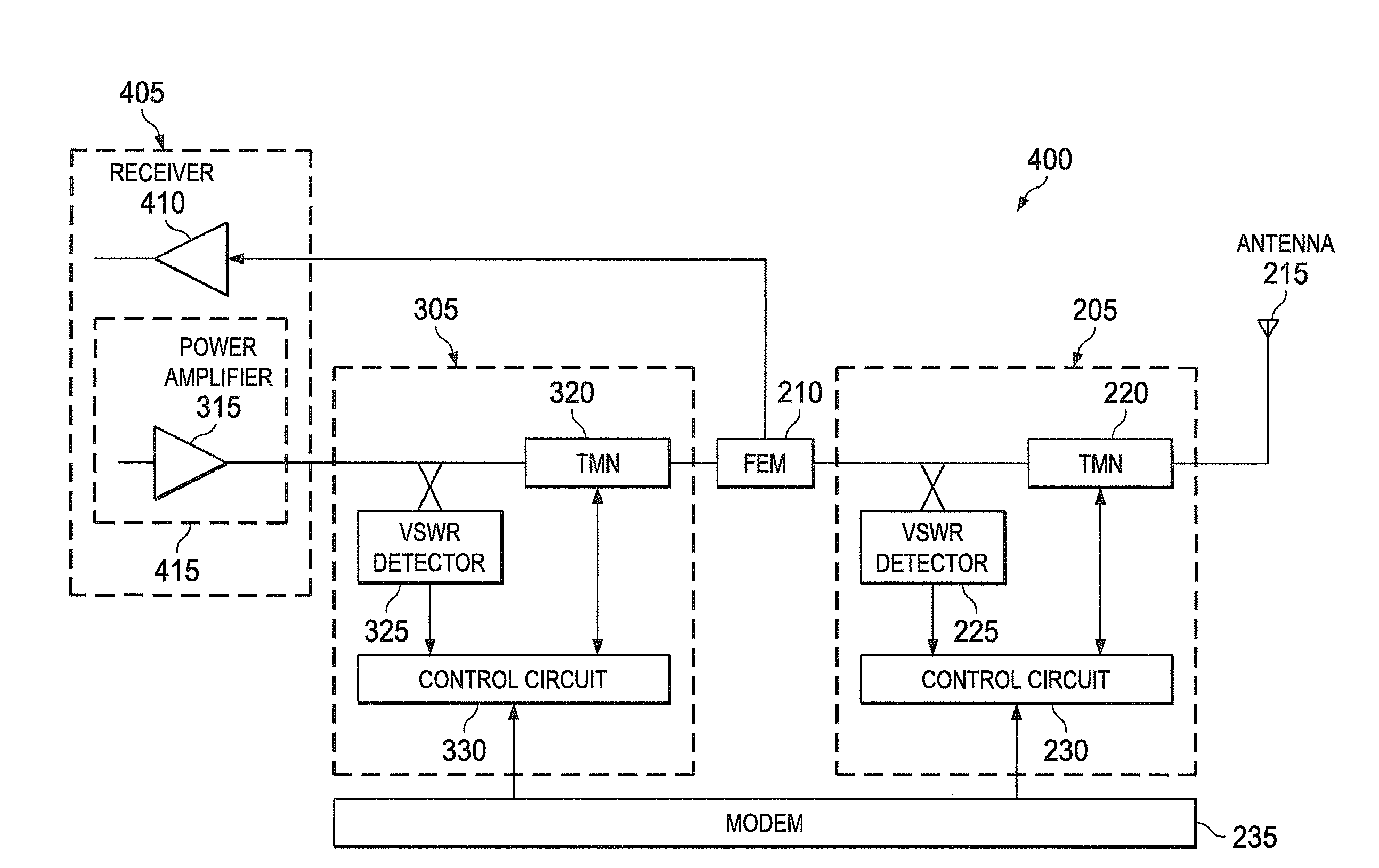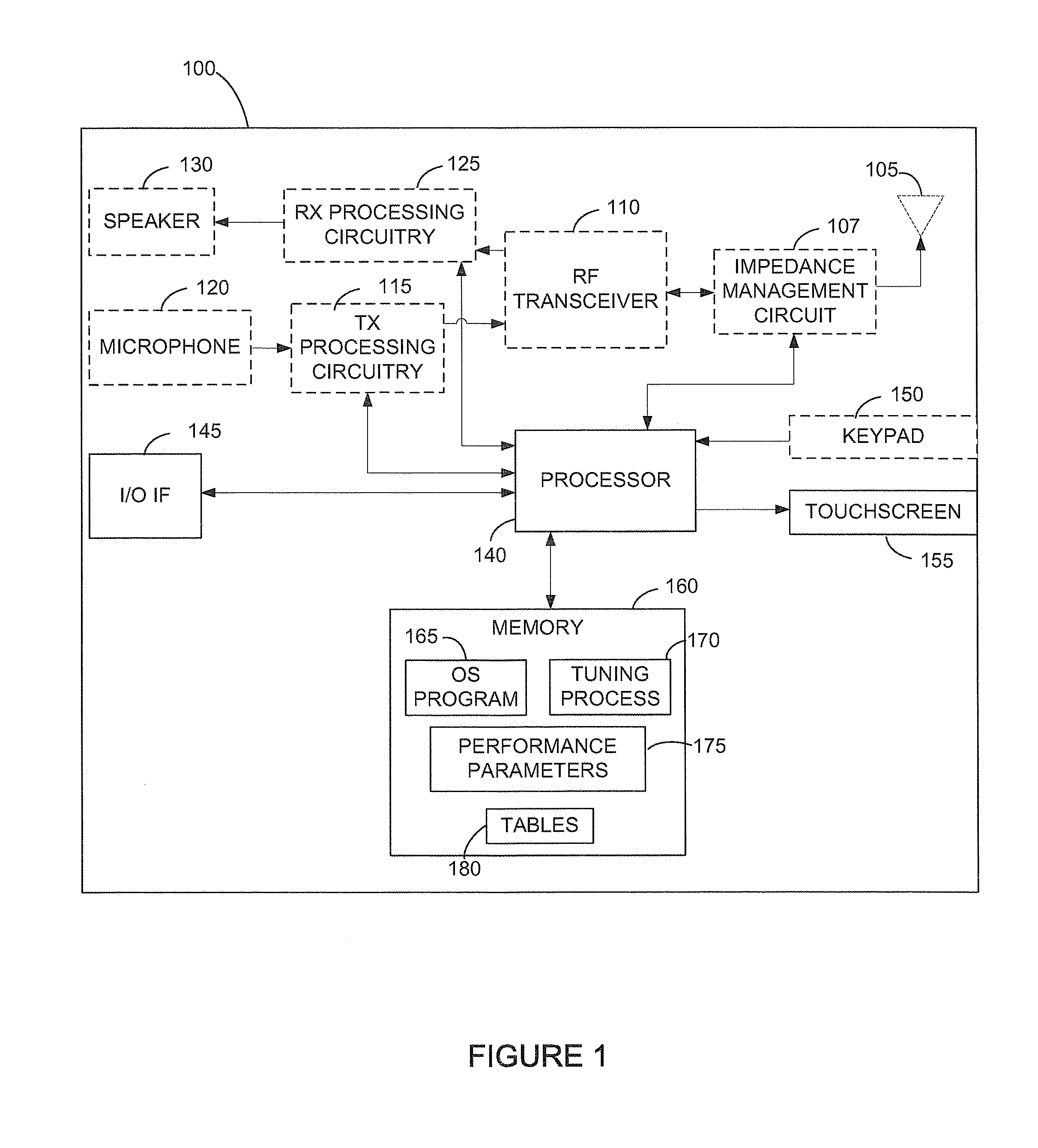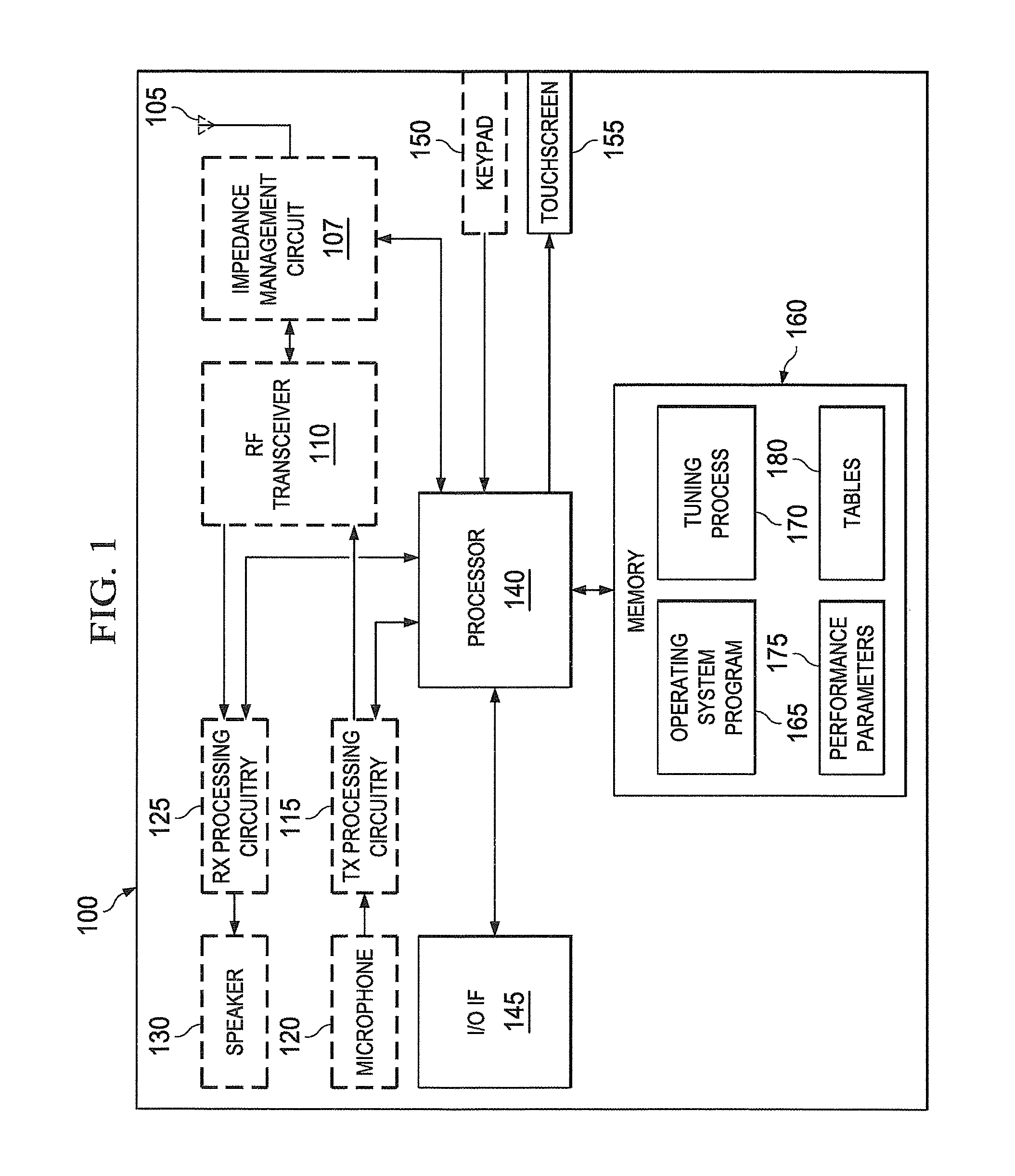Apparatus and method for controlling a tunable matching network in a wireless network
a wireless network and wireless technology, applied in the field of electrical circuit impedance matching, can solve the problems of inability less than desirable signal-to-noise ratio (snr) in both uplink and downlink cellular transmissions, and the inability of passive matching networks to provide antenna or power amplifier matching across multiple frequency bands
- Summary
- Abstract
- Description
- Claims
- Application Information
AI Technical Summary
Benefits of technology
Problems solved by technology
Method used
Image
Examples
Embodiment Construction
[0022]FIGS. 1 through 9, discussed below, and the various embodiments used to describe the principles of the present disclosure in this patent document are by way of illustration only and should not be construed in any way to limit the scope of the disclosure. Those skilled in the art will understand that the principles of the present disclosure may be implemented in any suitably arranged wireless network.
[0023]FIG. 1 illustrates a wireless mobile station according to the present disclosure. Mobile station 100 comprises antenna 105, impedance management circuit, 107, frequency (RF) transceiver 110, transmit (TX) processing circuitry 115, microphone 120, and receive (RX) processing circuitry 125. Mobile station 100 also comprises speaker 130, processor 140, input / output (I / O) interface (IF) 145, keypad 150, touchscreen 155, and memory 160. Memory 160 further comprises basic operating system process 165, matching process 170, performance parameters 175, and tables 180. In these exampl...
PUM
 Login to View More
Login to View More Abstract
Description
Claims
Application Information
 Login to View More
Login to View More - R&D
- Intellectual Property
- Life Sciences
- Materials
- Tech Scout
- Unparalleled Data Quality
- Higher Quality Content
- 60% Fewer Hallucinations
Browse by: Latest US Patents, China's latest patents, Technical Efficacy Thesaurus, Application Domain, Technology Topic, Popular Technical Reports.
© 2025 PatSnap. All rights reserved.Legal|Privacy policy|Modern Slavery Act Transparency Statement|Sitemap|About US| Contact US: help@patsnap.com



